
Courtney McKerrow
Sunset from the bonnet, moonrise from the bench seat
To view each day’s beautiful forms, framed by the windscreen of my 1976 F100, is a luxury of the simplest kind.

To view each day’s beautiful forms, framed by the windscreen of my 1976 F100, is a luxury of the simplest kind.

We can describe our lives as a kaleidoscope of experiences, bold technicolour, pastel shades, or the grey of darker times; a journey of direction, changes and surprises which makes up a life. This self-portrait is a vehicle for reflection. Do I really see and respond to the detail and patterns in the turning tube of others’ stories? How well do I reflect on my own? Do the subtleties show on our faces? Or does everything blend together into one blur of colour and light?

I have chosen a turtle riding a wave, reflecting how nature changes constantly with ease and grace. The resin disks are my take on the colours flowing in a kaleidoscope, as Myrtle rides the wave to its end.
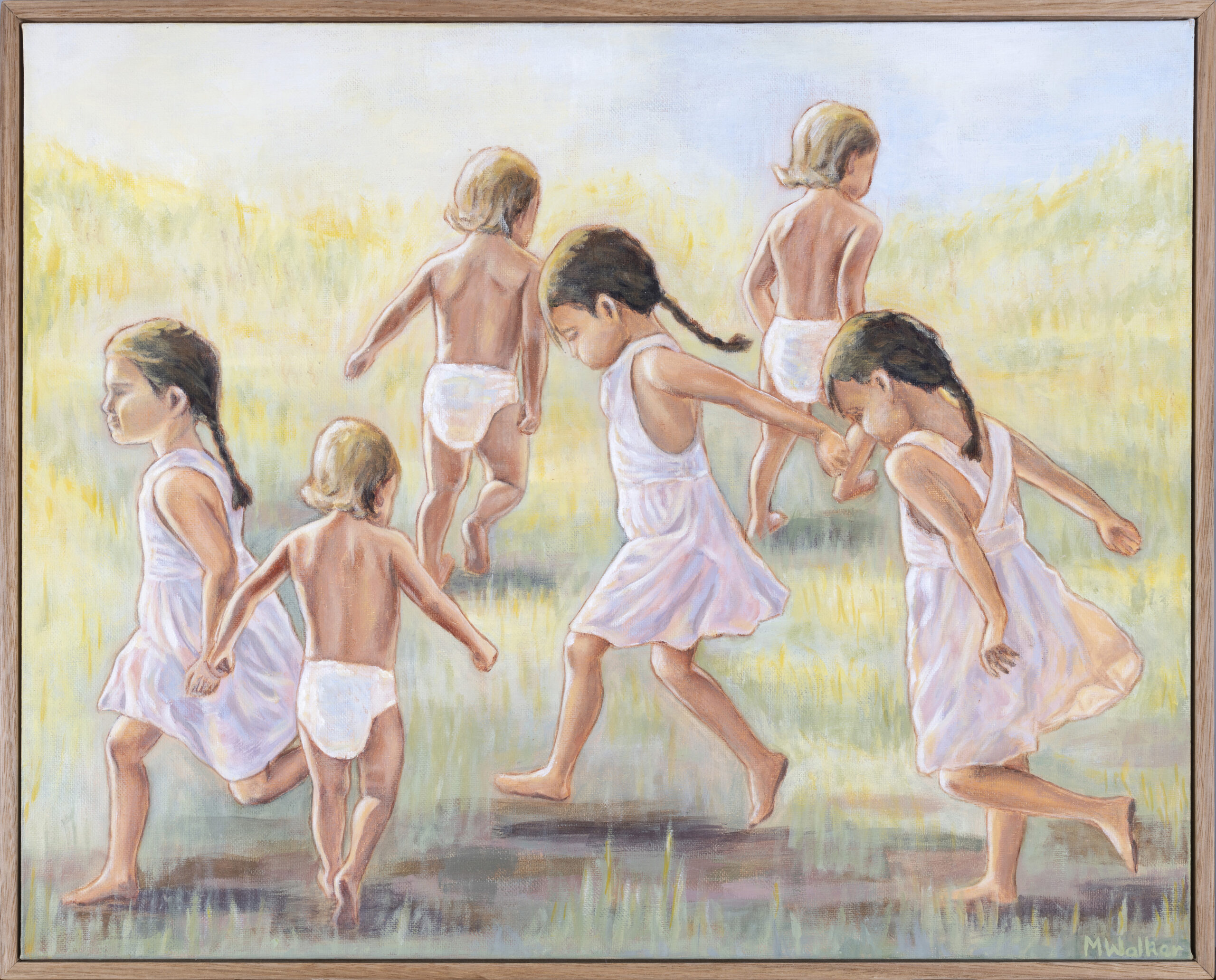
This piece began on an autumn afternoon, watching my daughters play in the golden light. Endless movement captured in the repetition of their images across the canvas. The same few elements somehow repeatedly colliding to create unique moments in time. Easily missed. Each second something lost, something gained. The kaleidoscope of life in its early years.

Time cannot remain still; it is always evolving. The world as we see it is not static like a picture, but full of movement. Taking a pictorial calendar of the year that was past, tearing the colourful landscape images into pieces, and then rearranging the images into a new landscape, created The year that will be… so, continuing the kaleidoscopic cycle of creation, destruction, and re-creation.

In a spirit of regret for the photographic medium, I temporarily put the camera aside and surrendered to an editing app.
All images of my 18 entries from previous Regional Artists’ Exhibitions, their struggles and their sense-making, were submitted to this app. With a few keystrokes each image was mirrored seven times. I could then arrange the images into any random pattern.
This exercise resulted in the visualisation of an idea, a kaleidoscope of encoded memories, which the future might unscramble and decipher as the current app is unable to.

Along the coastline of Australia lies the wonder of the Great Barrier Reef. The ripples formed during the tidal phases create and recreate textures and patterns, disrupting the ocean’s surface. Colours formed by the sunlight reflecting on the coral add beauty to the reef. As the coral dies and regrows, fractured patterns appear, fall apart, and come back together again.

The cutting and polishing of stones reveal a kaleidoscope of different patterns, colours and cell structures. I have been collecting stones for over 40 years, especially fossilised tree fern, agates, jaspers, and petrified wood, and find the complexity within the stones amazing. The fossilised tree ferns are approximately 160 million years old, and all stones have a variation of patterns and colours. The jaspers were formed around the time of volcanic activity and the colours can be spectacular. These stones were all found in the Miles, Wandoan area.
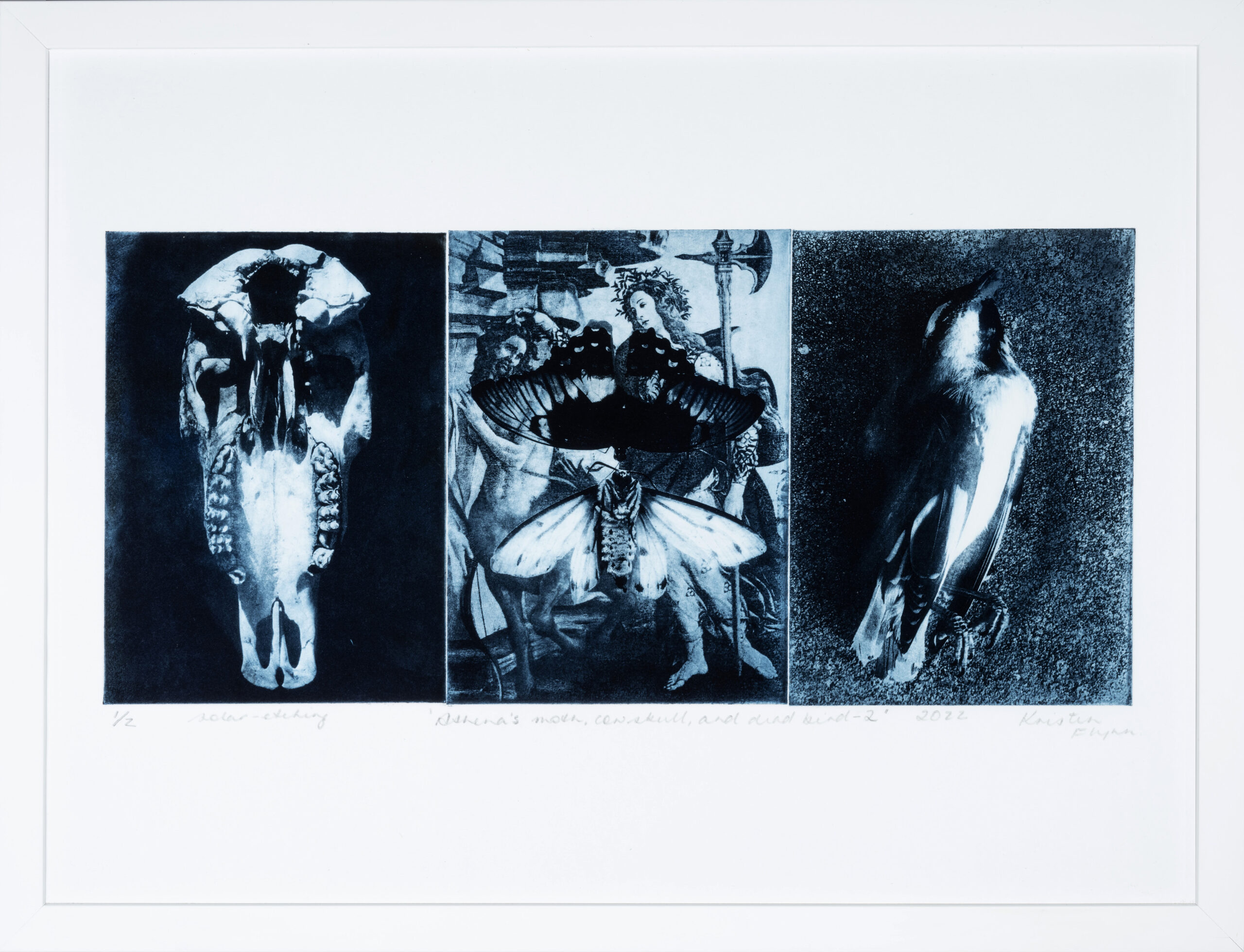
Athena’s moth, cow skull, and dead bird is a three-plate solar-etching printed with Prussian blue oil. I have created this artwork to investigate the ambiguity and beauty of mortality. Each living creature in my work is at the end of its life cycle, encouraging the audience to contemplate their own transient self. I have included an appropriation of a Botticelli artwork, as his work is iconic for beauty. His depiction of Athena, the Greek goddess of wisdom, reminds us of the human constructs we put in place to understand our own kaleidoscopic world and its life cycles.

A wildly colourful, unfinished abstract painting set the scene for this artwork. The idea of creating a subject in the ‘scene’ that mirrored the patterns and colours already there drew me to the male Common Bronzewing pigeon. However, ‘common’ the Bronzewing pigeon may be, the resplendent metallic colours in the wing feathers made it the perfect subject. The complex interplay of colour, pattern, and light between the ground and the bird, as the artwork was created and changed, mirrored the turning of a kaleidoscope. The result suggests that nature itself is a kaleidoscope that is reflective, dynamic, elusive, and beautiful.

Living with chronic anxiety is like viewing the world through a kaleidoscope. It is destruction and creation. It is repeating patterns of behaviours and a constant blur of colour. It is craving stability in the most unstable of places. Cracked is an expressive piece, a landscape full of repetition and inner thoughts.

The Bunya Mountains is exploding with rain-refreshed life. Within this bounty, feral animals multiply alarmingly. Pigs. Cats. Rabbits. Mice. All recently arrived. Humans respond. Bait. Poison. Trap. Shoot. Drastic solutions have unintended consequences. In the bush, dingoes evoke an array of emotions. Anger. Horror. Fear. Revulsion. At the Bunyas, there is a need to twist our emotional kaleidoscope and look again. Here, dingoes are already playing their part in natural, feral-pest control – in plain sight! Perhaps differing kaleidoscopic emotions can be identified? Recognition? Respect?…
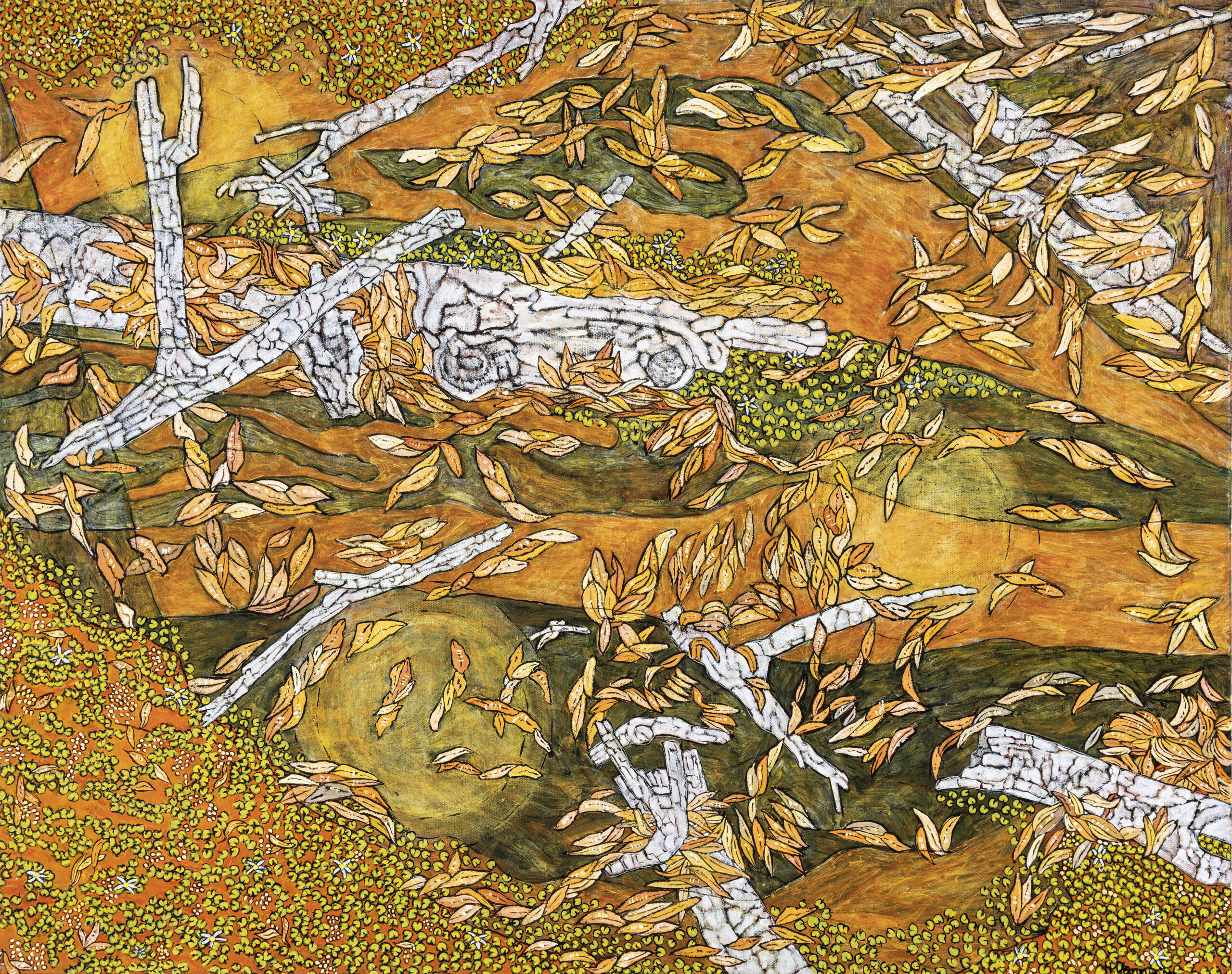
Along the banks of our creek, the water’s translucency exposes the flotsam and jetsam of nature’s life cycle. Leaves, sticks and miniscule water plants form community clusters, readjusting their patterns as the creek water ebbs and flows. Their colours change through greens to browns to greys as they age and decay. At every stage patterns reform, rearrange, and respond to the forces that impact on them.
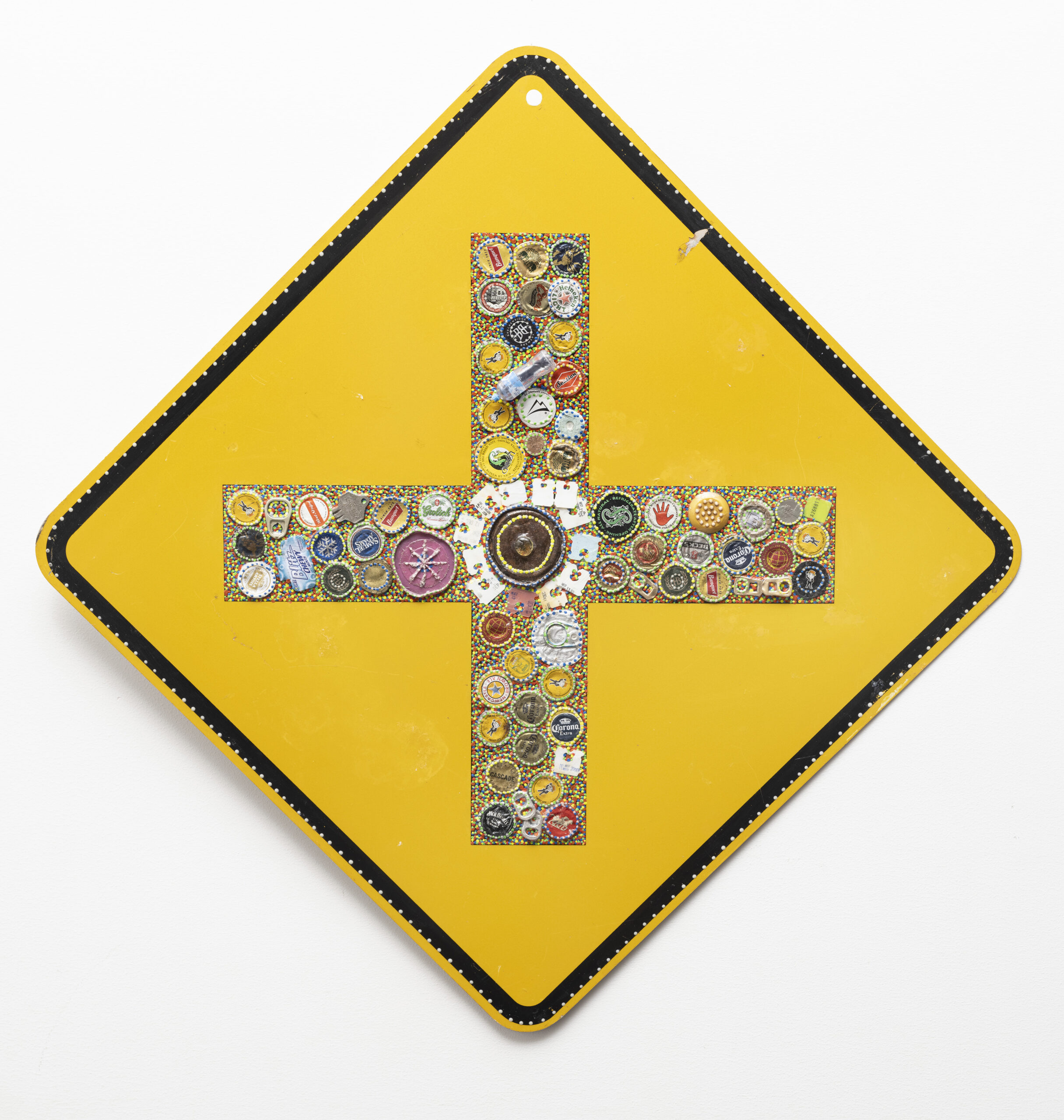
The Queensland outback: vast, dangerous, magnificent. A kaleidoscope of mesmerising landscapes, as present as any sunrise or sunset. As visible as the flora and fauna, and standing in all weather, are the ever-present highway traffic signs. They are damaged, faded, vibrant, cracked, scratched, bent, shot, and have absorbed the weather conditions and dust into the very fabric of the sign. A visual ‘outback kaleidoscope’ assault.
The work can be viewed three ways, (1) in normal light; (2) under a black light (fluorescent); and (3) in the dark (phosphorescent).

Ominous silence was created by capturing and editing over 700 photographs. This was achieved by utilising intervalometers that enable photographs to be mathematically calculated and taken every second. I chose to enhance a colourful lush green and yellow foreground to complement and contrast the powerful approaching supercell thunderstorm, which only produced these two visible air strikes that fell simultaneously together during its life cycle. The small insignificant house on the left side of the image reveals the scale of this uncontrollable beast.
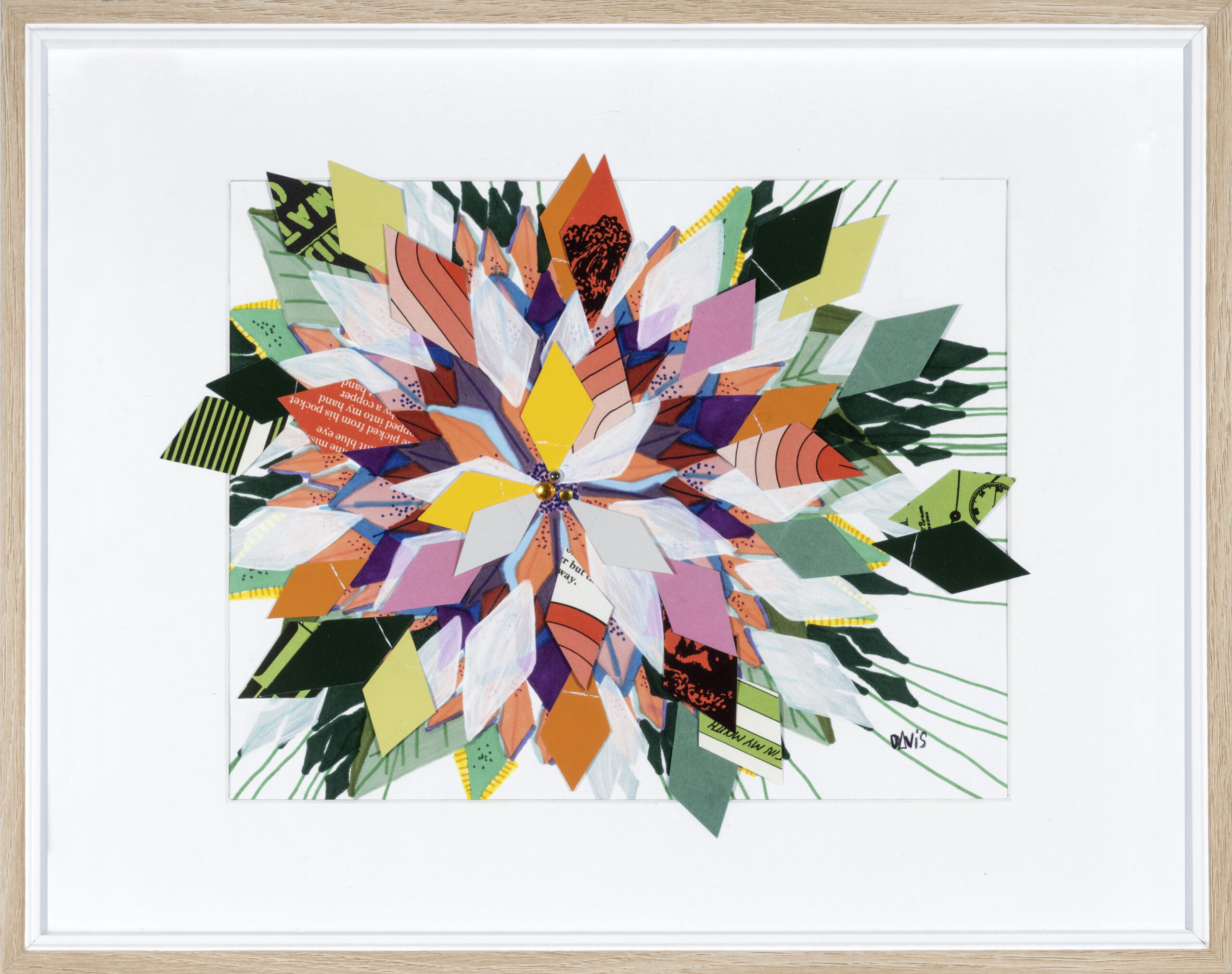
Flowers are rich in patterns, just like looking through a kaleidoscope.

Rippled duplicate was created by finding a large reflective foreground that duplicated the illuminated sky. Long exposure photography techniques were required to capture the intensity of yellow, orange, pink, and purple colours underneath the high clouds. I chose the mirrored composition to improve the already stunning sky and separate the physical and deceptive worlds from each other. This is finalised with the balanced silhouette tree line that narrows the focus into the centre of the image.
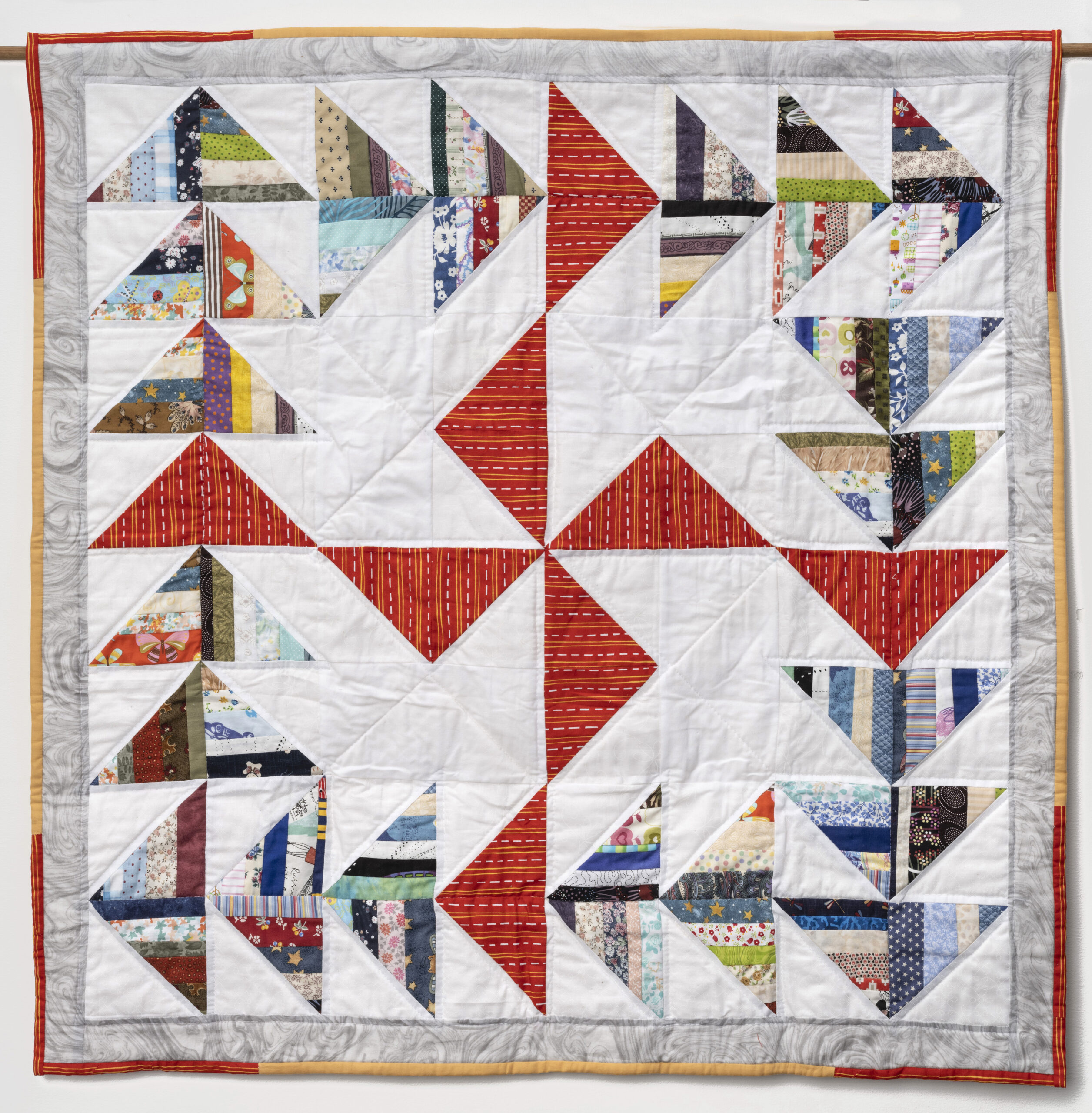
Travelling through Western Australia in a caravan our journey took many turns and twists in all directions. The colours were bold and unexpected, and showed nature’s surprises.

The world of angels is a kaleidoscope of interesting happenings, possibilities, and adventures. I truly believe that angels are watching over us, as the Bible tells us so. This artwork was created in a moment when I felt the presence of something supernatural comforting me and reassuring me that I am loved and special to God, my Father.
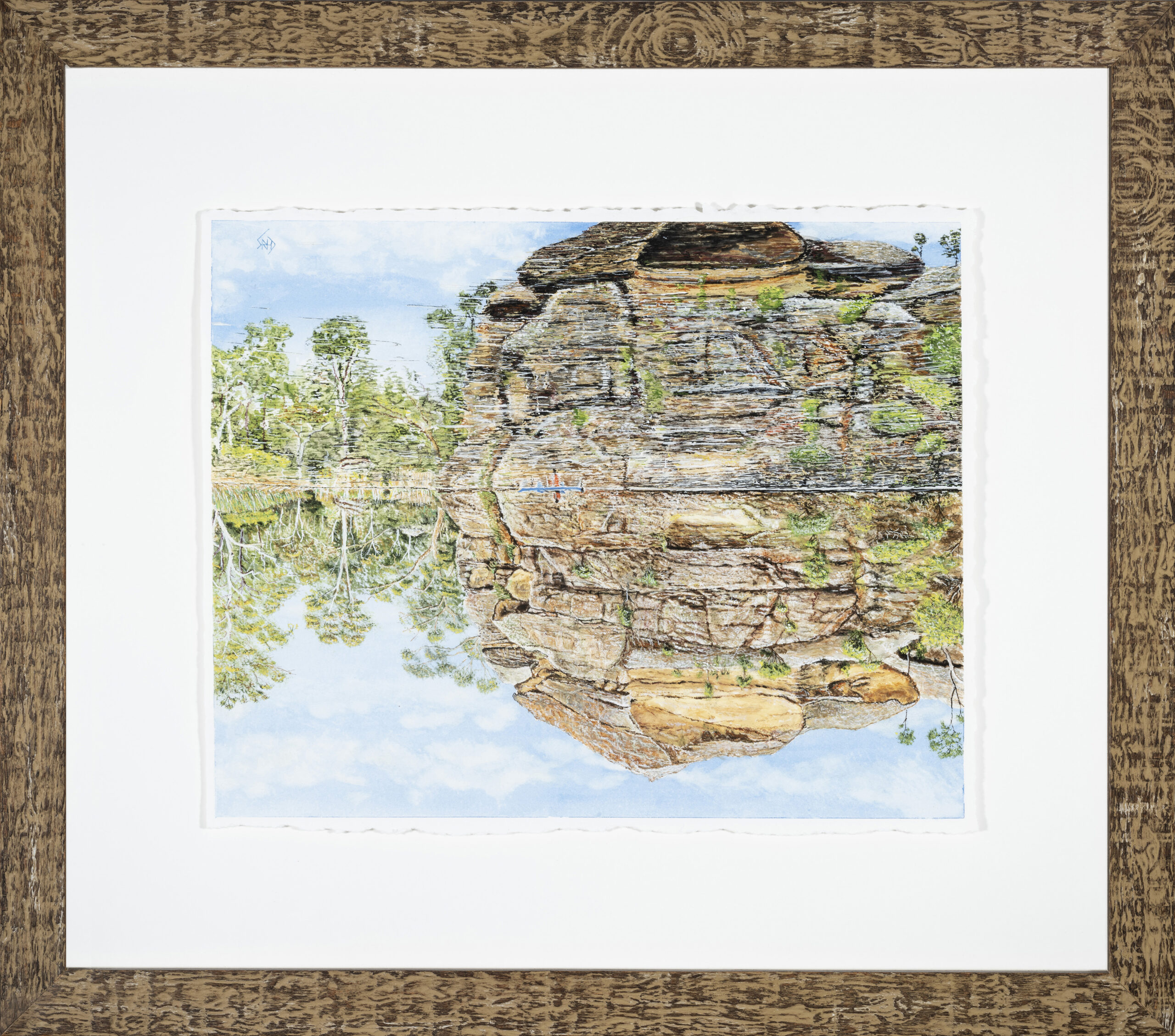
As a lone kayaker slices through the mirror surface of Dunns Swamp, the perfect reflection of the surrounding sandstone cliffs is destroyed. The kayaker’s disturbance of the water slowly flattens, and the picture-perfect reflection is soon rebuilt. Then wind fractures the reflection, and the cycle of destruction and recreation is played out once more.

This piece is a reflection of my journey in the world of ceramics: colours and shapes, the predictably and unpredictability of results, and the sheer joy of being part of the process. The parallels between the kaleidoscope, with its beautiful colours and shapes falling unpredictably on a mirror, and the glowing colours and patterns of this ceramic piece as it was removed from a Raku kiln are striking. The patterns and shapes are formed not only by me, but also by the method of firing over which I have no control, just as the kaleidoscope forms uncontrolled patterns.
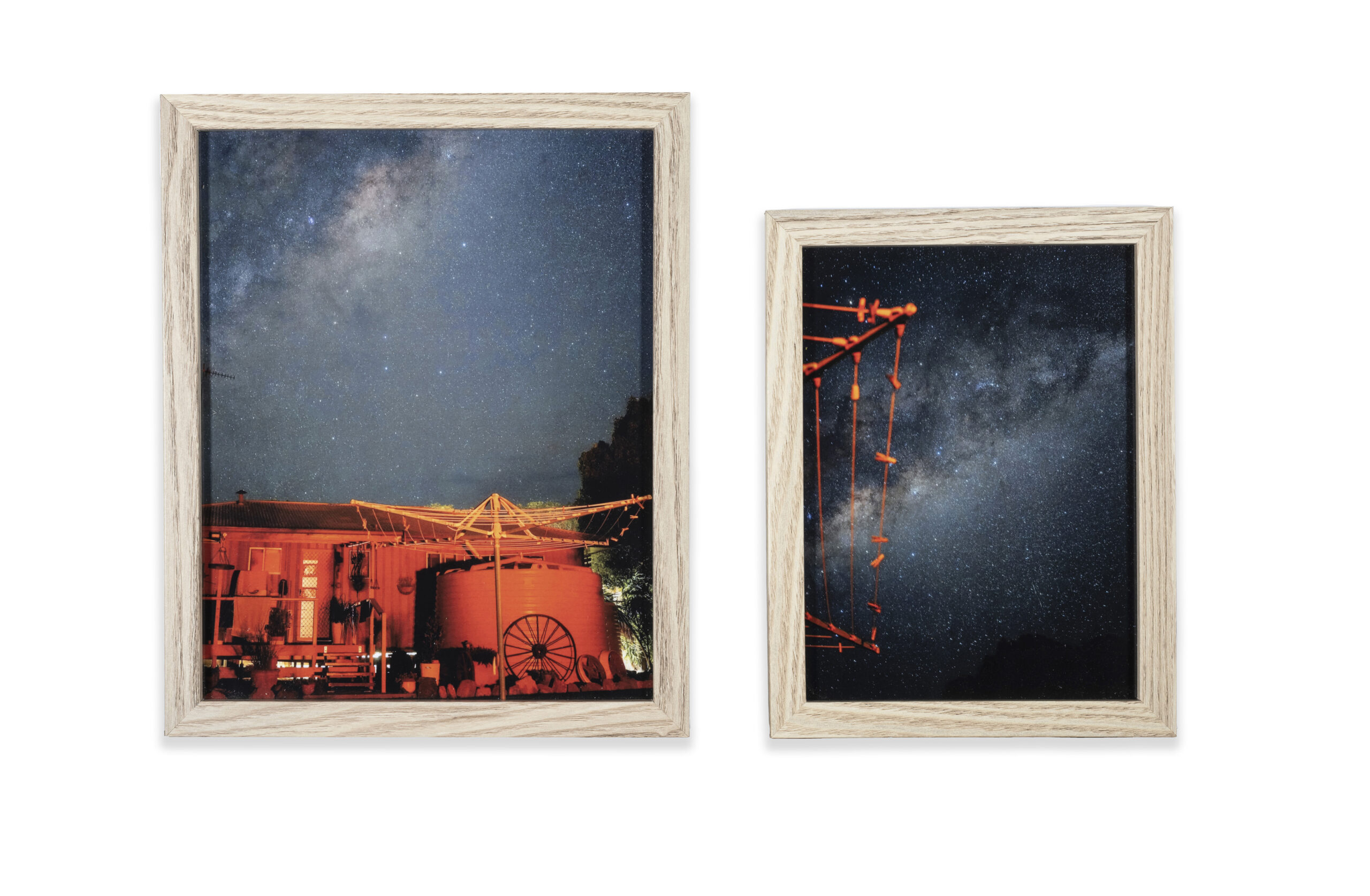
An endless variety of patterns stretching out across our dark southern sky. Look up, turn your head, and squint your eyes, to experience a constantly changing sequence of connections, images, and meanings.

The continuous change of patterns and shapes around us, create a new reality in which to survive and grow.

Kaleidoscopes are fun and beautiful, random in their delight, just like blowing bubbles. But their real beauty is the joy they bring, allowing us to remember our inner child and become playful once again.
Gaze through the colourful bubbles floating on glass, to see the real beauty at the depth of this piece – you. Look at you. Look into your soul. You are the beauty, seen through the layers. It’s you.
This artwork has been lovingly framed with timber from our old hay shed, recalling things of old, just like the treasure of the old-fashioned kaleidoscopes we have all played with.
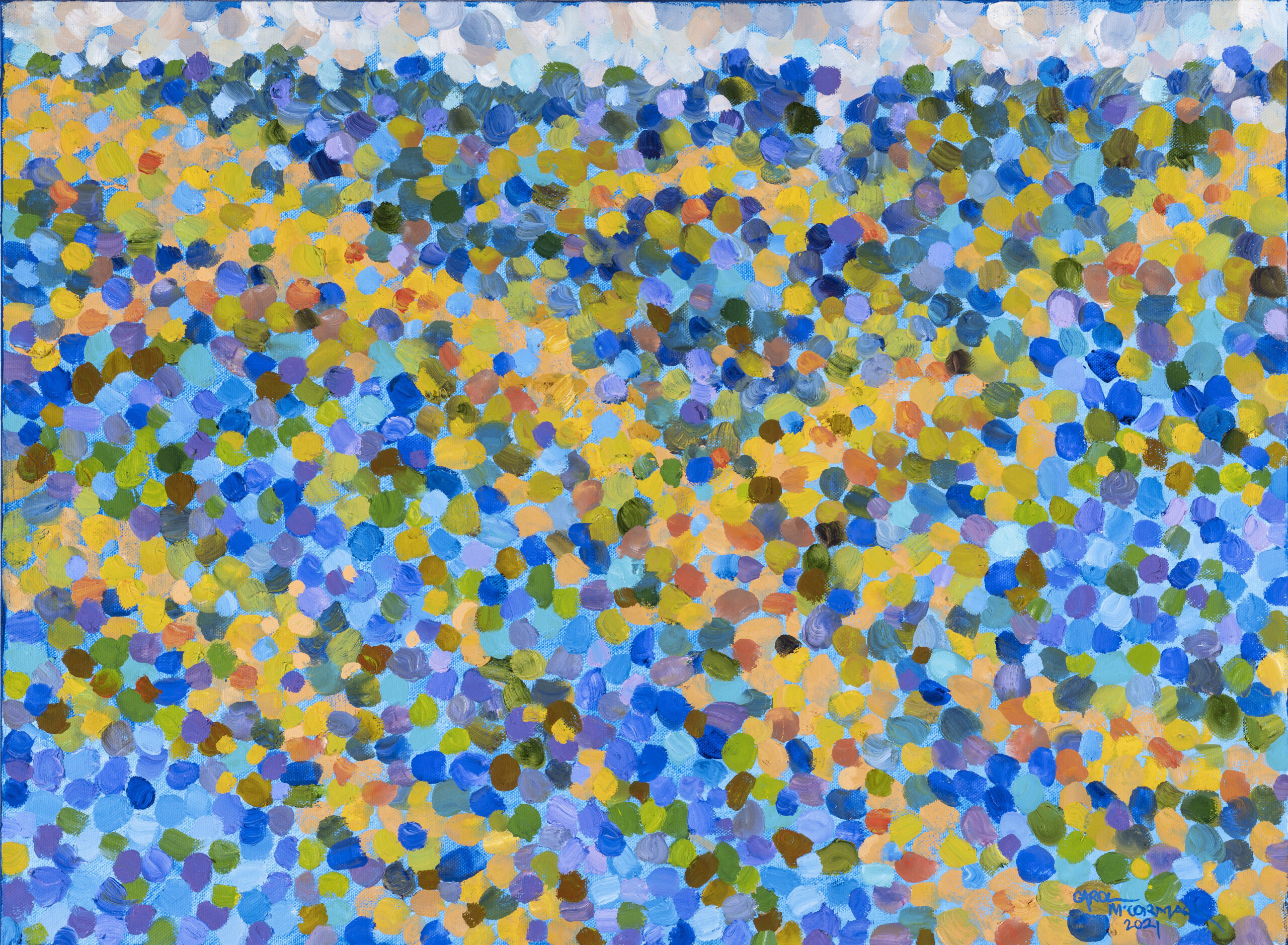
A friend at Blue Mountain Heights had a lovely view to the north-east. The blues of the distance contrasted with the dry warm colours where the eucalypt forest thinned out, and the colours danced in a soft swirling kaleidoscope.

Well before humans attempted to create wealth by transforming basic substances into something more rare and therefore valuable, nature was at work creating the building blocks of life from basic elements such as oxygen, hydrogen, carbon etc. Colours, seen and unseen by humans, are vital to the continuation of the cycle of life. They play a pivotal role in the Blue Carpenter Bee as sole pollinator for this Polygala bush, in ensuring continuation of the species, production of honey, and providing enjoyment for its human observers.

The early bird depicts a young girl on her confirmation day in 1974 at St Cecilia’s Anglican Church in Chinchilla, Queensland. The church walls are dotted from the ground to the roof in coloured stained-glass crosses and at night it glows from the inside out, casting cellophane symbols into the darkness.

Time-Lapse Video Documentary DOMINATION 3 was envisaged by collecting, editing and composing 100,000+ photographs, capturing the authority, aesthetic, and immense scale of nature that showcases the continuously changing environment.

As you drive through the region you see one side of the country dry and burnt, and the other green and thriving. This kaleidoscope of colours represents the changes of the season.
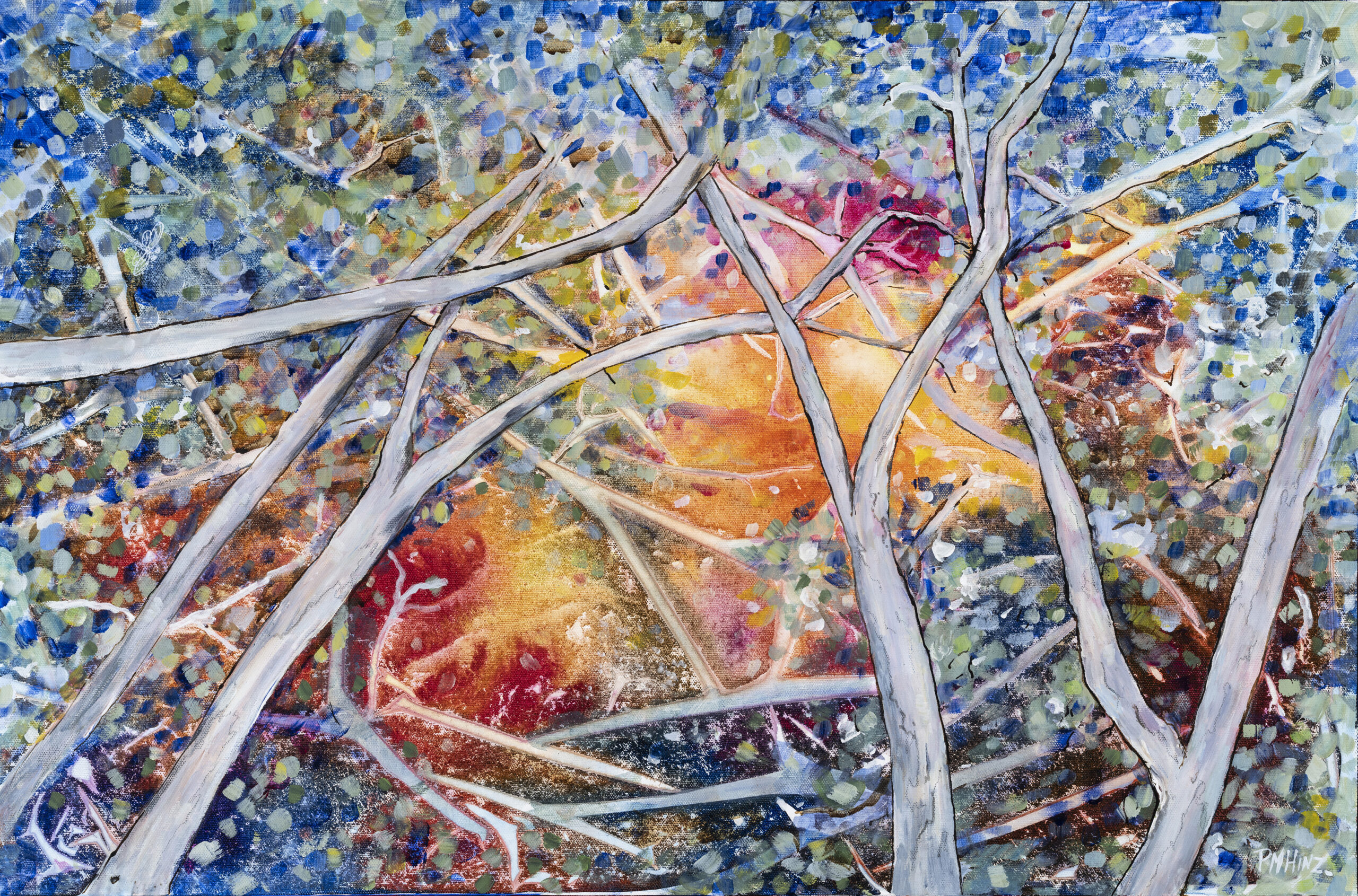
The inspiration for Beyond blue came from daily observations of the sunrises and sunsets filtering through the treetops outside my studio. The kaleidoscopic colours changing and reflecting on the shimmering leaves and branches was a reminder of how life, as well as the seasons, in nature evolve. Through the dark times we can look ‘beyond blue’ and hope for better times ahead. On the land we endure the disasters of drought and flooding rains and progress to the occasional triumph and magic season.

Although in the year 2022 we are enjoying a magic season on the Western Downs, during many of the years in our recent past we have learnt to survive debilitating droughts. Living close to nature we become familiar with adjusting to the evolving seasons. In Beyond red I wanted to suggest that the vagaries of nature are similar to the turning of the kaleidoscope as it changes colours.
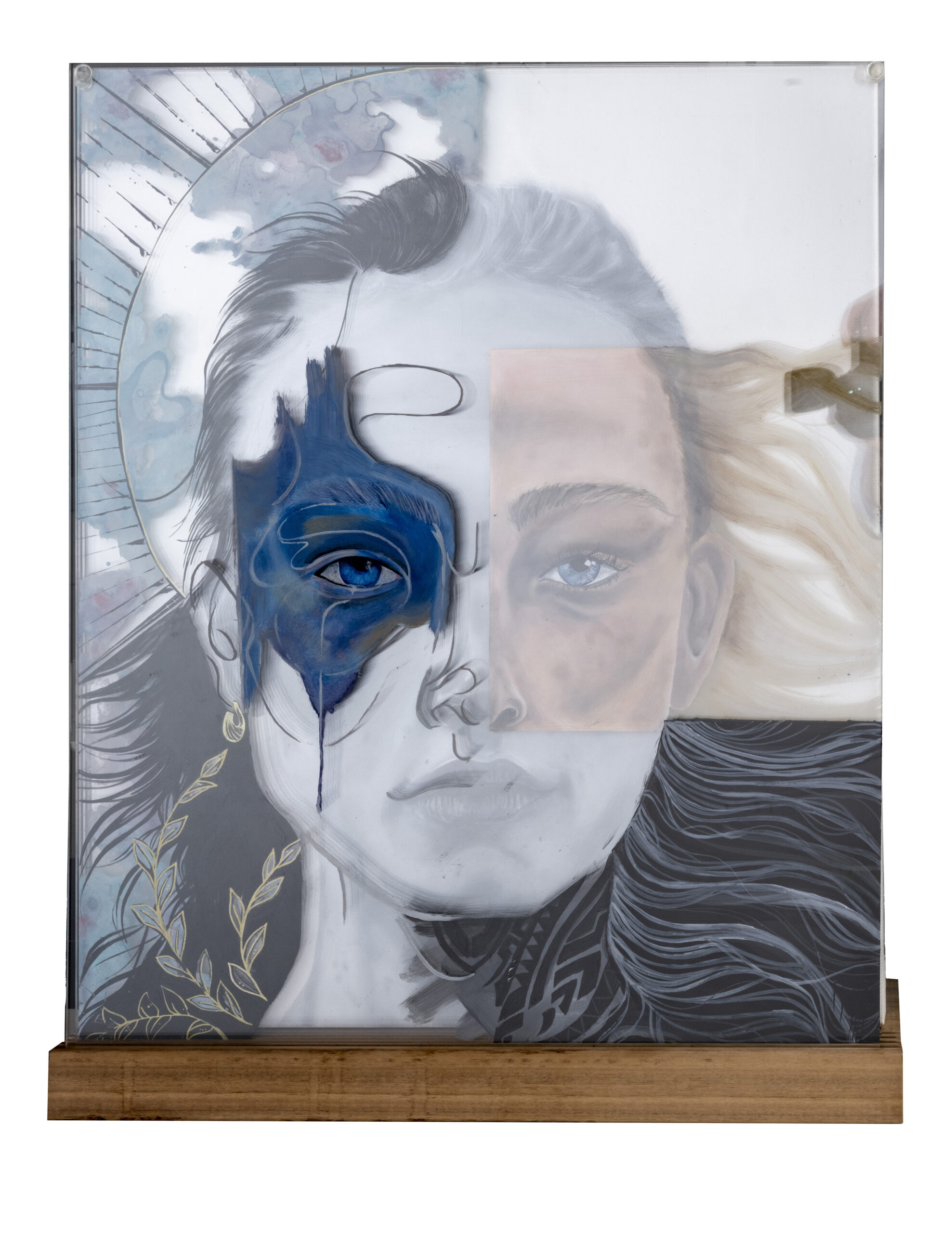
Look me in the eye, who do you see? One woman or a hundred different people placed upon each other.
Look through me, who do you see? The mother, the noisy child, the loved, the lover. The daughter, the broken one, the quiet as a mouse, a little too much, that outspoken one.
The kaleidoscope of the lives I have lived and the people I have been. The coloured broken glass of a thousand people placed upon each other.
Am I one? I am of many.
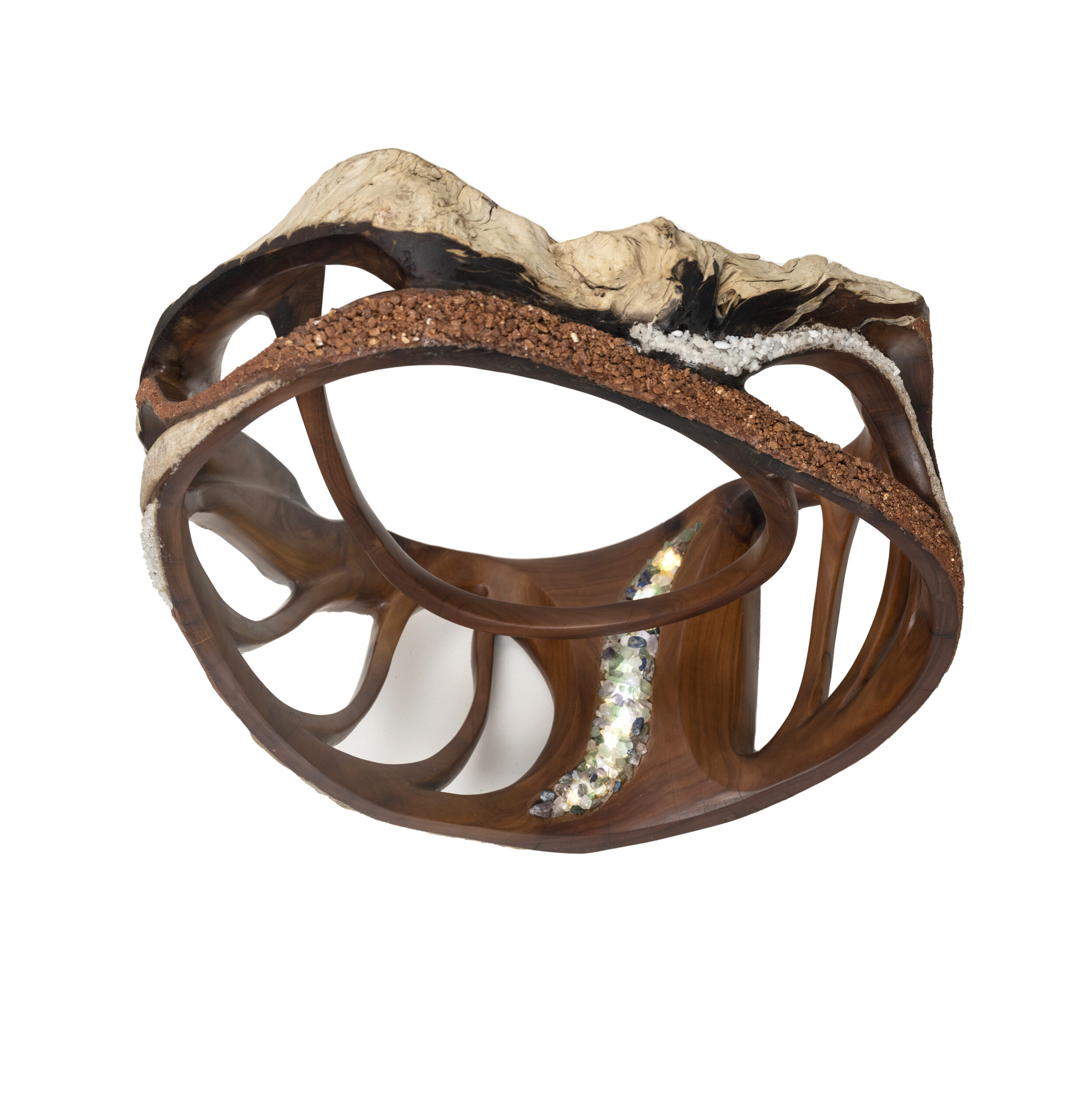
This sculpture is carved from a Budgeroo tree stump from our property. It reflects on the natural cycles of light, shapes, contrasting textures, and colours that are constantly changing in the forest.
The focal point is the optical illusion of the Aurora’s rising sun that has been carved inside the tree stump.
There is a depiction of a rocky creek with a variety of gemstones. At night, it illuminates a spectrum of coloured and dappled light within and beyond the sculpture casting variable patterns of light and shadows.

A farming kaleidoscope can be seen from a bird’s eye perspective; the kaleidoscope of bare paddocks, crops, and native pastures of the Western Downs all year round.

Stacked staircase was created by finding suitable landscape compositions, capturing, and editing images. Long exposure photography techniques were required as this storm developed during low light conditions. Over 100 photographs were taken to capture the most suitable image of the continuously changing structure, and varying intensity of each illuminating lightning strike. I utilised an old shed in my composition to represent the significance and intensity of this thunderstorm as it surged across the landscape, uninterrupted yet continually evolving new layers of historical data upon itself.

In the fortnight leading up to the completion of this work, our babysitter had gastro, my son (3) had conjunctivitis, I spilt boiling water on my foot resulting in a considerable burn, my daughter (5) taught herself how to climb up on the trapeze and swing like a fairy, we had a night in hospital with my son, my husband and I contributed to the running of a fundraiser for our local kindergarten, my son chased 10 scary monsters out of the garden, and my daughter taught my son how to pronounce the word ‘balloon’ properly. It’s a crazy, precious, kaleidoscopic life.

Mother Nature whispers to her children, “Remember you must live”. This artwork reinterprets the notion of Memento Mori, and rather than focus on the inevitability of death, instead shows the potential within all living things to burst forth as brilliant, ever evolving kaleidoscopic forms.

